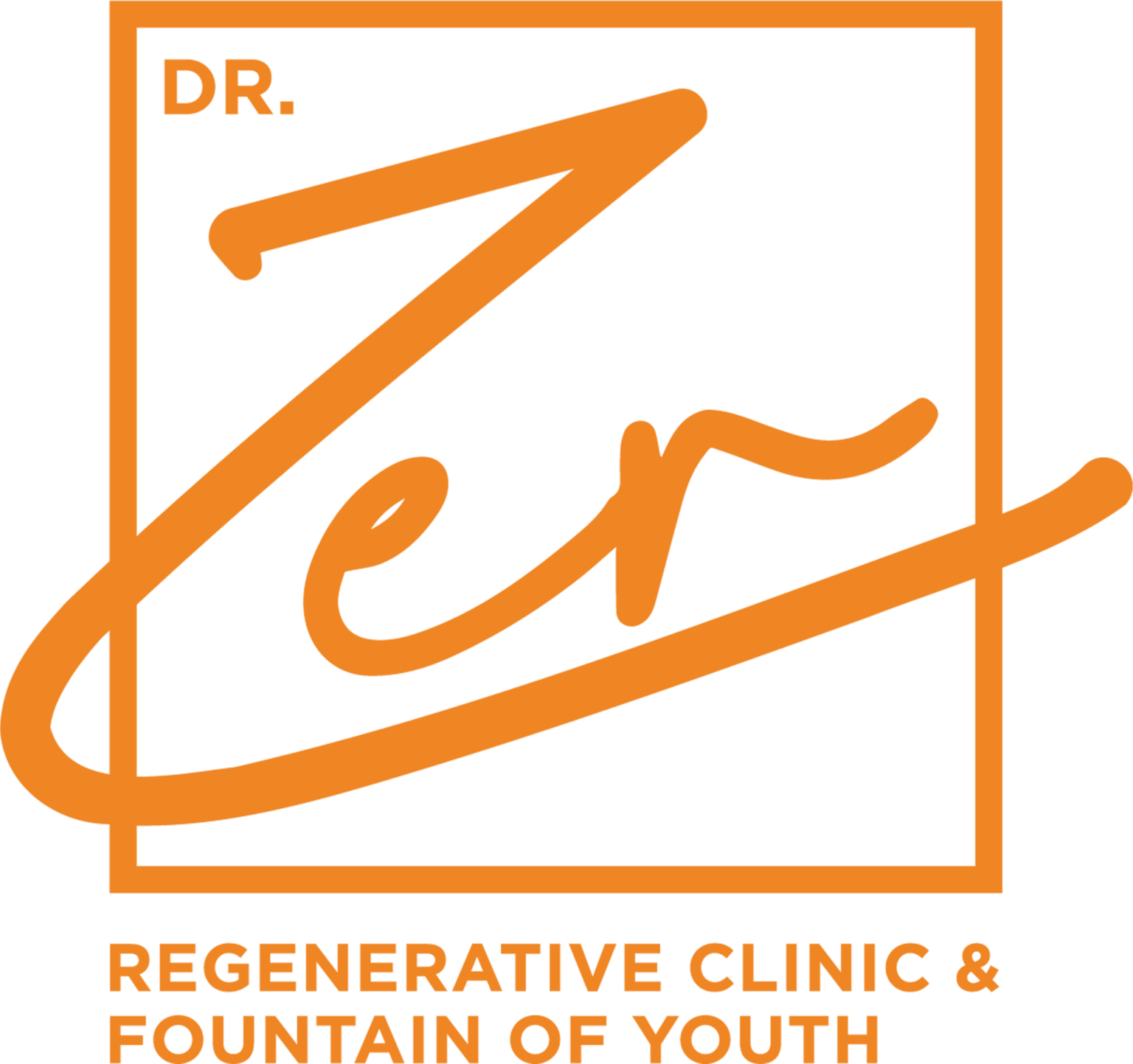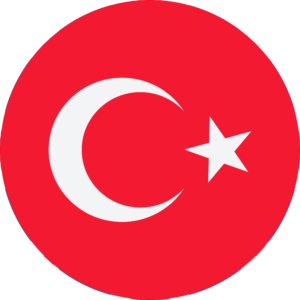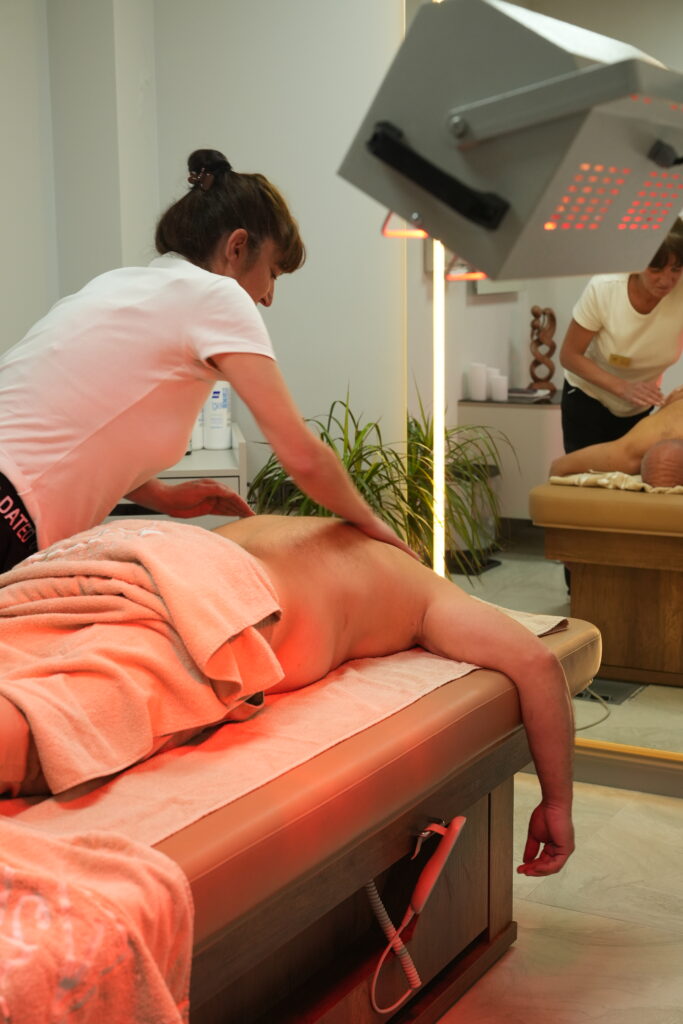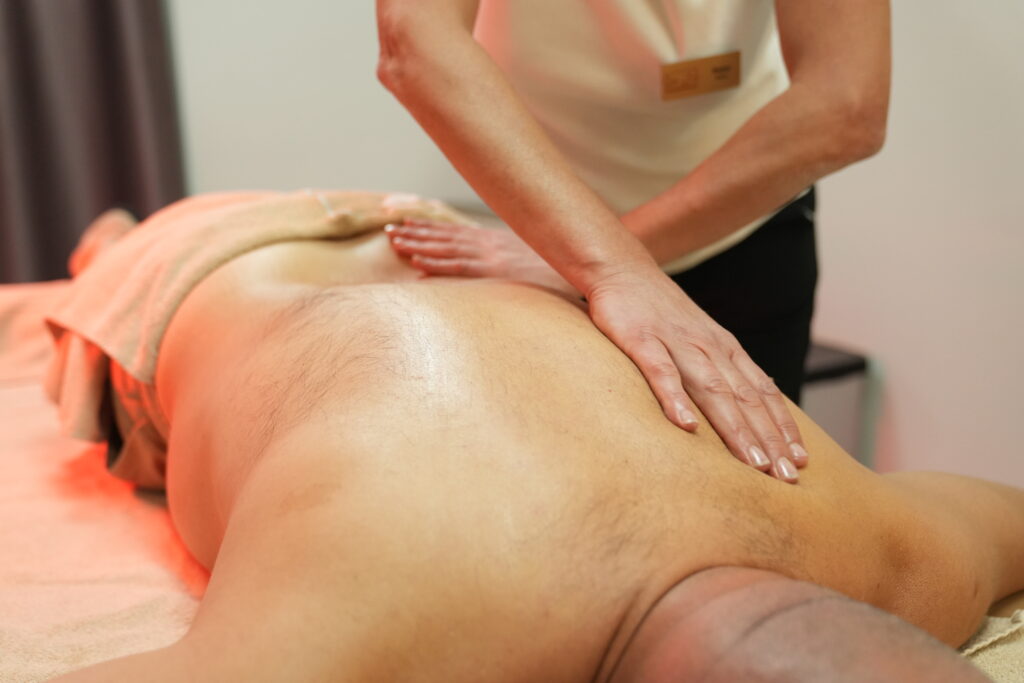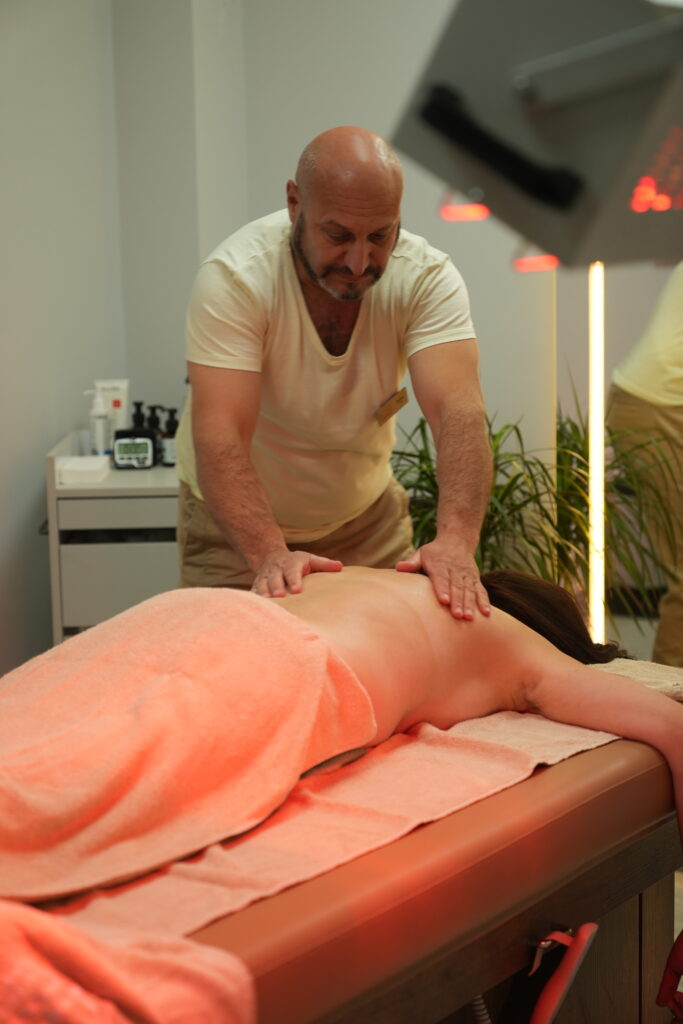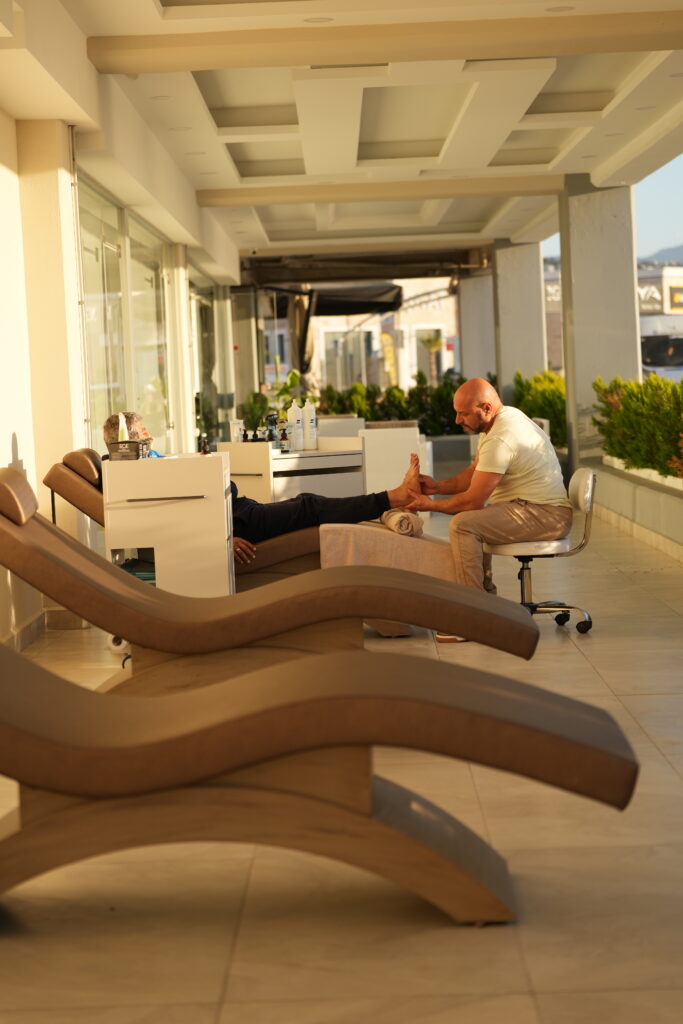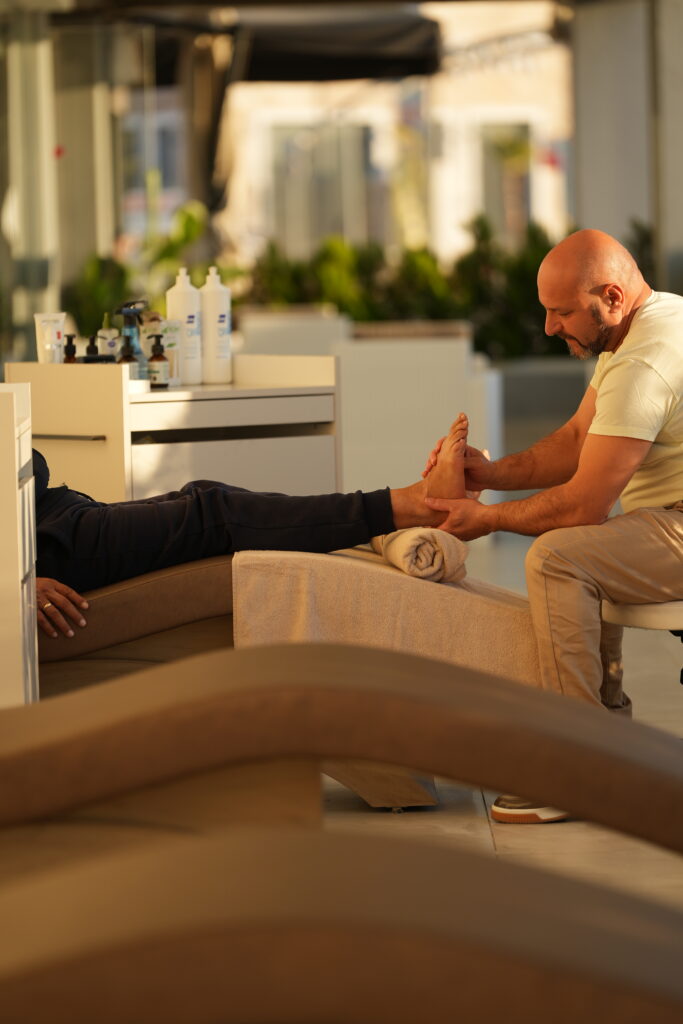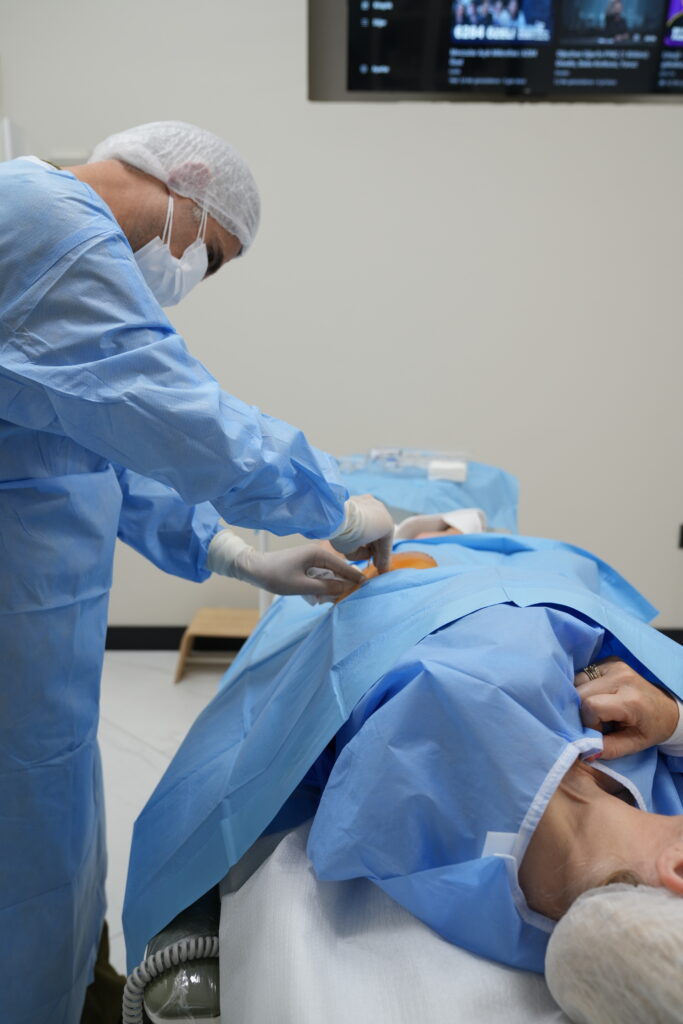What is LPG Medical?
A 100% Natural Aesthetic Solution LPG is a 100% natural and patented device that acts on the skin and subcutaneous tissue. It is also known as LipoMassage or Endermologie. It stimulates the skin, subcutaneous adipose tissue and the tissues surrounding the muscles in the body, which we call facia, with mechanical massage method; increases the metabolism of fat cells and improves skin firmness. It improves pain by acting on fascia tissue. Fat burning and improvement of skin quality are realized at the same time. It offers a non-surgical aesthetic solution for regional slimming, cellulite treatment and body shaping. By acting on the skin and subcutaneous tissue, it increases blood circulation and supports lymph circulation. Effect of LPG: Accelerates Fat Metabolism: Accelerates the metabolism of fat cells by increasing blood circulation 4 times; provides regional and general thinning.
Cilt Kalitesini İyileştirir: Mekanik uyarılarla cilt hücrelerinde %240 kolajen, elastin ve hiyalüronik asit üretimini destekler, böylece cilt daha sıkı, pürüzsüz ve elastik hale gelir.
Provides Relaxation: By acting on fascia tissue, it can reduce muscle tension and provide relaxation.
Who is it suitable for?
People with Regional Fat and Cellulite Problems: It is ideal for people who have difficulty losing weight and experience regional fat. It is especially effective in the treatment of lipoedema.
Those who have sagging problems in their body and want to tighten: Doğal yollardan cilt ve cilt altı sıkılaşarak formda bir vücuda kavuşmak isteyenler için uygundur.
Lymphedema Patients: It may support treatment by increasing lymphatic circulation.
Recovery After Aesthetic Surgery: It is preferred for edema treatment and body contour corrections. Face Applications: It is used for tightening and improving skin quality on sagging or edematous faces. It can also help to eliminate edema that develops after needle procedures.
How Many Sessions Does It Take? Results usually become visible after 3 sessions. For permanent and effective results, 10-20 sessions are recommended.
Benefits: Reduces regional fat. Improves the appearance of cellulite. Tightens the skin and improves blood circulation. Shapes the body contour. Defines the contour line on the face. Reduces the appearance of wrinkles. Reduces sagging.
To whom is it not applicable? Not suitable for pregnant women, patients with disseminated cancer, those with severe varicose veins and those with open wounds or infections on the skin.
Stem Cells Powerhouses of Regenerative Medicine
Our bodies are equipped with extraordinary cells known as stem cells, which play a critical role in healing and regeneration. These cells are unique because they have the potential to differentiate into many different cell types in the body. In regenerative medicine, stem cells are used therapeutically due to their ability to repair damaged tissues and offer promising treatments for a variety of conditions.
Understanding Stem Cells Stem cells are the basis of every organ and tissue in your body. There are two main types:
- Embryonic Stem Cells: These stem cells are derived from early-stage embryos and have the ability to develop into any cell type in the body.
- Adult Stem Cells: These cells are found in small amounts in most adult tissues, such as bone marrow or adipose tissue, and their capacity to differentiate is more limited, but they are vital for tissue repair.
Applications in Orthopedics In the field of orthopedics, stem cell therapy offers a revolutionary approach to treating conditions that traditionally required more invasive treatments. Here are some examples of how stem cells are treating orthopedic problems:
- Osteoarthritis: Stem cells can be injected into joints where cartilage has worn away. They promote cartilage regeneration, which relieves pain and improves joint function.
- Tendon Injuries: Tendons that connect muscles to bone heal slowly. Injecting stem cells directly into the injured area can accelerate the formation of new tendon cells and speed healing, reducing the risk of future injury.
- Bone Repair: Stem cells can be used in the treatment of fractures that are not healing properly and even in bone regeneration.
Applications in Dermatology In dermatology, stem cells offer exciting possibilities for cosmetic and medical treatments:
- Wrinkles and Skin Aging: Stem cells can stimulate the production of collagen and other proteins that are essential for maintaining the skin's elasticity and youthful appearance. Injecting stem cells or topical applications that stimulate their growth can help reduce wrinkles and rejuvenate the skin.
- Wound Healing: For severe burns or other wounds, stem cells can speed healing and reduce scarring by accelerating the formation of new skin cells and stimulating the growth of blood vessels in the damaged area.
The Process of Stem Cell Therapy
- Collection: Stem cells are usually collected from the patient's own body, typically from bone marrow or adipose tissue.
- Injection: The stem cells are injected into the damaged or diseased area and begin the healing and regeneration processes.
- Follow-up: Patients are usually monitored for 6 months after treatment and the effectiveness of the treatment is evaluated.
Potential and Challenges Stem cell therapy holds great potential for treating a wide range of diseases and injuries. However, it is important to approach this treatment with caution because embryonic stem cells in particular can raise ethical concerns. Furthermore, more research is needed to fully understand the long-term effects and capabilities of stem cell therapies.
Conclusion Stem cells represent a significant advance in regenerative medicine, offering new hope for diseases once thought to be incurable. By harnessing the body's own healing power, stem cell therapy allows damaged tissues and organs to regenerate with fewer side effects and lower risks than traditional procedures.
Exosome Therapy: A New Horizon in Orthopedic and Dermatologic Regeneration
Exosomes are small vesicles released by cells and play a vital role in intercellular communication. They facilitate various physiological processes such as tissue repair and inflammation control by transporting proteins, lipids and nucleic acids between cells.
Applications in Regenerative Medicine
Exosome therapy is being explored alongside stem cell therapy for its potential to accelerate healing processes. Exosomes contribute to therapeutic processes in the following ways:
- Accelerating Healing: Exosomes can enhance the regenerative abilities of stem cells by carrying specific molecules that provide tissue repair and anti-inflammatory responses.
- Orthopedic Healing: In the field of orthopedics, exosomes can be used to improve outcomes in osteoarthritis, tendon injuries and bone repair. Exosomes facilitate better integration and survival of stem cells, resulting in more effective tissue regeneration.
- Dermatological Healing: In skin care and wound healing, exosomes can accelerate the skin regeneration process and reduce scarring. Promotes skin healing by stimulating the growth of new skin cells and increasing collagen production.
Integration of Exosome Therapy with Stem Cell Therapy
The Process of Combined Therapy:
- Collection: Kök hücreler genellikle hastanın kemik iliği veya yağ dokusundan toplanır. Ekzozomlar, bu kök hücrelerden türetilebilir veya donör hücrelerden elde edilebilir.
- İşleme: Hem kök hücreler hem de ekzozomlar laboratuvarda işlenir ve yüksek konsantrasyonda ve canlılıkta olmaları sağlanır.
- Injection: Kök hücreler ve ekzozomlar, hedeflenen bölgeye enjekte edilir ve birlikte çalışarak iyileşme ve rejenerasyonu artırır.
- İzleme: Tedavinin etkinliği takip seansları ile izlenir ve hastanın yanıtına bağlı olarak tedavi planı ayarlanır.
Potential and Challenges
Kök hücreler ve ekzozomların kombinasyonu umut verici olup, rejeneratif tıpta güçlü bir yaklaşım sunmaktadır. Bu sinerji, iyileşme sürecini hızlandırmanın yanı sıra doku onarımının genel kalitesini de artırır. Ancak, ekzozom tedavisi gibi kök hücre tedavisi de devam eden araştırmalara ve klinik denemelere tabi olup, etkinliği ve güvenliği daha iyi anlamak için daha fazla çalışmaya ihtiyaç vardır.
Conclusion
Kök hücreler ve ekzozomların entegrasyonu, özellikle ortopedi ve dermatoloji alanlarında tıbbın en ileri noktasını temsil eder. Vücudun doğal iyileşme mekanizmalarını kullanarak ve artırarak, bu tedaviler, daha önce tedavi edilmesi zor olan durumlar için yeni umutlar sunar. Bu yöntemler, hastalar için daha kişiselleştirilmiş ve etkili tedavi seçenekleri sunarak rejeneratif tıbbın geleceğine ışık tutmaktadır.
- Stem Cell and Exosome Therapy
Kök hücre ve ekzosom terapisi, vücudun doğal iyileşme süreçlerini hızlandırmak ve hasarlı dokuları onarmak için kullanılan yenilikçi bir tedavi yöntemidir. Kök hücreler, vücutta farklı hücre tiplerine dönüşme yeteneği olan özel hücrelerdir. Ekzosomlar ise hücreler arasında bilgi taşıyan küçük parçacıklardır ve hasarlı hücrelere iyileşme mesajları iletirler. Bu iki tedavi yöntemi, genellikle kronik hastalıklar, cilt yenileme, saç dökülmesi ve eklem sorunları gibi durumlarda uygulanır. Tedavi, vücudun doğal yenilenme kapasitesini artırarak daha hızlı ve etkili iyileşme sağlar.
- Stem Cell and Exosome Therapy in Joint Calcification
Osteoarthritis occurs when the cartilage tissue in the joint wears away over time, causing pain and limited mobility. Stem cell and exosome therapy is an effective solution for treating this type of joint problem. Stem cells help repair damaged cartilage tissue, while exosomes facilitate intercellular communication, accelerating the healing process. Thanks to this treatment, joint pain decreases and mobility improves. Natural healing can be achieved without the need for surgical intervention in the treatment of osteoarthritis.
- Stem Cell and Exosome Therapy in Tendon Injuries
Tendon injuries are common, especially in athletes, and can take time to heal. Stem cell and exosome therapy is used to promote rapid and effective healing of tendons. Stem cells regenerate damaged tendon tissue, while exosomes reduce inflammation and accelerate the healing process. This treatment method provides faster healing compared to traditional treatments and helps the individual return to normal activities more quickly.
- Stem Cell and Exosome Therapy for Facial Rejuvenation
Stem cell and exosome therapy is an effective method used for skin renewal and facial rejuvenation. Stem cells promote skin renewal, while exosomes send repair and rejuvenation signals to skin cells. This treatment reduces wrinkles on the skin, giving it a younger and brighter appearance. The application increases skin elasticity, resulting in healthier and younger-looking skin. Since it is a natural treatment, the results can be long-lasting.
- Exosome Therapy for Hair Loss and Strengthening
Exosome therapy is also an effective option for hair loss and hair strengthening treatments. Exosomes send signals to hair follicles that promote cell renewal and hair growth. This treatment helps to stop hair loss, strengthen weak hair, and promote new hair growth. When applied to the scalp, exosomes nourish hair roots, resulting in stronger and healthier hair growth. The treatment offers a natural and long-term solution for hair loss.
- Exosome Therapy for Immune System Boosting
Exosome therapy can also be used to strengthen the immune system and make the body more resistant to disease. Exosomes transmit the right signals to immune cells, strengthening the body's defence mechanisms against infections and diseases. This treatment method can be effective in people with chronic diseases or individuals with weakened immune systems. By boosting the body's natural immune response, it supports overall health and well-being.
- Exosome Therapy in Neurological Diseases
Neurological diseases are disorders that affect the functioning of the nervous system, and exosome therapy offers a regenerative treatment option for these diseases. Exosomes promote the healing of damaged tissues by transmitting signals to nerve cells. In diseases such as Alzheimer's, Parkinson's and stroke, this treatment helps nerve cells to regenerate. Exosome therapy contributes to the repair of damage to the nervous system and improves patients' quality of life.
- Exosome Therapy in Metabolic Diseases
Metabolic diseases are conditions that affect the body's ability to produce and use energy, and exosome therapy is also beneficial in this area. Exosomes support proper cell function, thereby improving metabolic processes. In metabolic disorders such as diabetes, obesity, and insulin resistance, exosome therapy helps regulate cellular energy balance. This treatment plays a supportive role in managing metabolic disorders and improves overall health.
